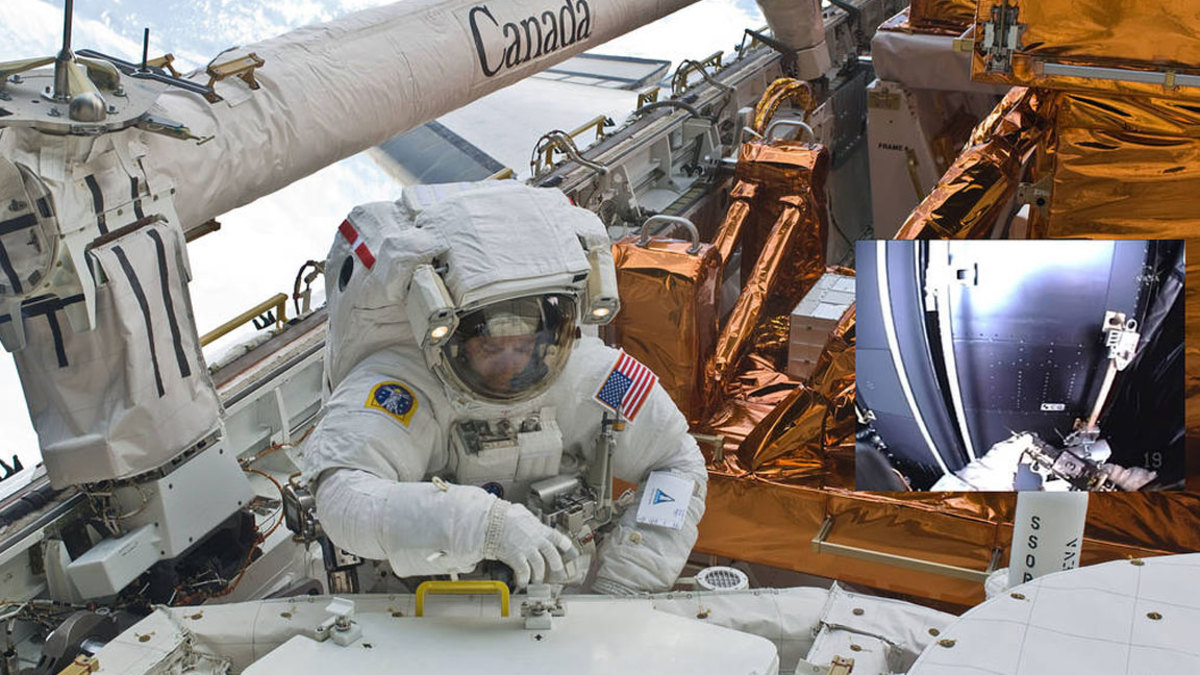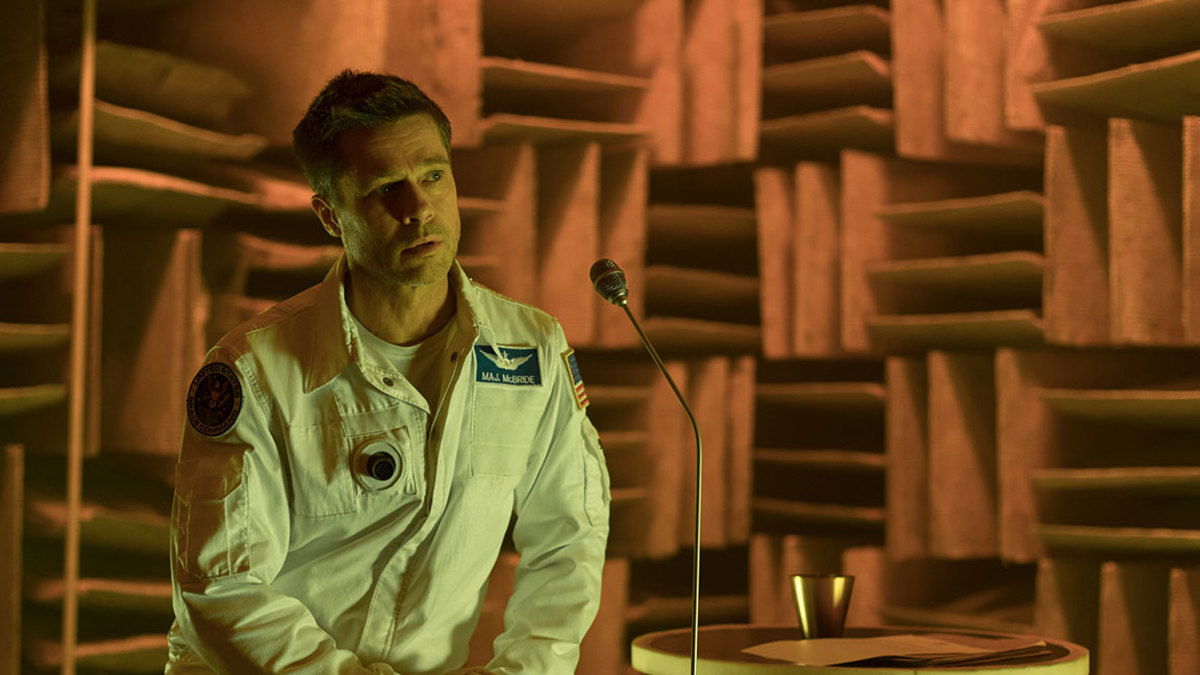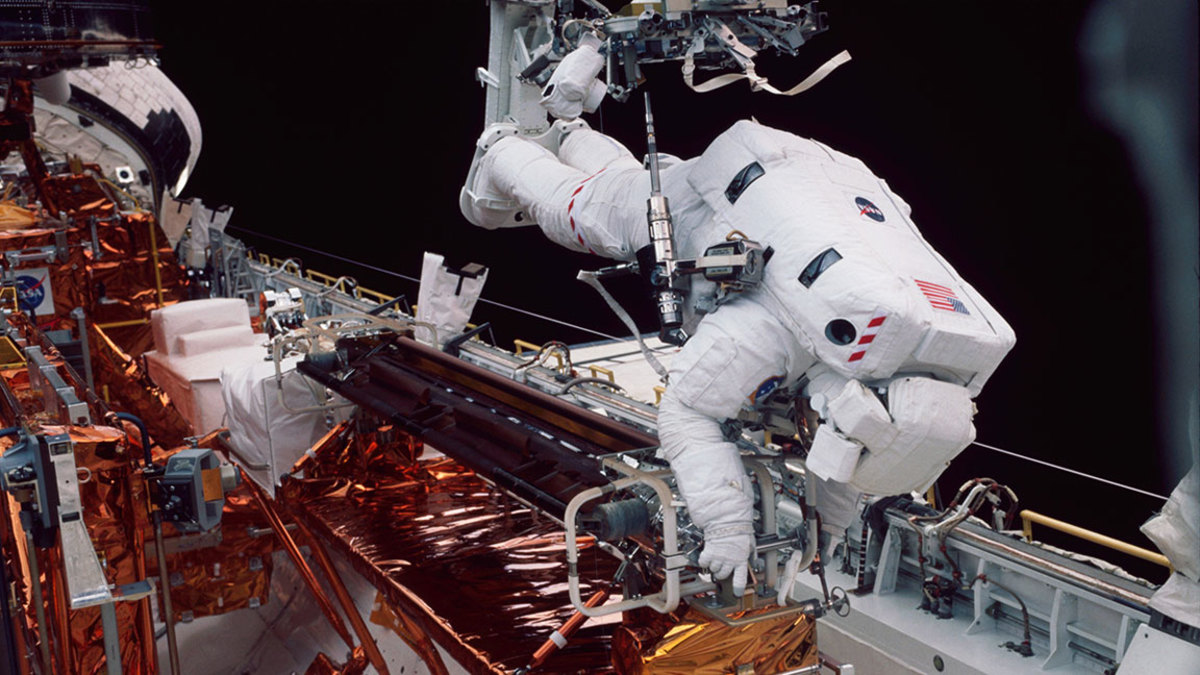Major Roy McBride, as played by Brad Pitt, gets high praise from his superior officers before being selected for a special mission during the early moments of Ad Astra. “The rumor is that your pulse has never gone above 80 in any of the spacewalks,” says the general. “That is very impressive.” The scene sets off an epic thriller that finds McBride chasing his father to the ends of the solar system, a fictional story grounded in the reality of humanity’s ambitions.
Real-life NASA astronaut Mike Massimino has a special insight on the opening sequence, given that he has completed two spacewalks himself. Over the course of his two missions off-planet, he clocked around 572 hours in space, with 14 hours and 46 minutes outside of the shuttle in his Extravehicular Mobility Unit (NASA’s term for spacesuit).

Massimino was invited to see the movie by Paramount Studios and putting aside the clearly fictional elements, the majority of Pitt’s experience rings true. No doubt thanks to the fact that NASA was consulted during the scripting process, even providing footage of the Moon and Mars used in the final product.
Men’s Journal spoke with Massimino on training for space, what it feels like to leave the planet and his thoughts on Ad Astra.
What did you think of Pitt’s performance as Roy, and how he portrayed him?
I think Brad Pitt made a cool astronaut. That’s the first thing and most important thing that I am looking for is someone cool to play the astronaut. I felt that Brad played Roy as a very stoic astronaut, almost like Neil Armstrong, who was my own personal idol. That ability to cut out distractions and remain focused, which I believe is a huge requirement of the job. Going out there teaches you that being scared or unnerved doesn’t help you, ever. During a space flight being afraid is never going to help you so that is one of the first characteristics you want to get rid of. You need to concentrate on the job at hand.
During the film Roy has a device that helps him go through psych evaluations, what did you think of that element?
I thought it was an interesting take on not what we do now, but what we may do in the future. Those scenes were a bit more intense than my experience, but that is in the context of what we do now and have done in the past. If we were doing missions like this, going on this long of a journey, it may actually be necessary. Someone going that far away from the planet probably would require a very strong mental state. They would need to be ready to go to the limit both physically and mentally. I could absolutely see us using technology like that to evaluate a person’s mental state and how they are handling going those distances.

How do you combat those mental challenges?
Sending someone away for a year is a lot different than a few weeks, but the principles are the same. You want to keep people productive and keep their morale up, and to do that you need to make sure that they have what we call “good physiological support”. The need for that became apparent over the course of previous missions both our own and that of our counterparts. That usually means some connection to back home. The ability to send emails back and forth started in the shuttle era. Back in the day, there was an email sync that would occur, so the communication would come twice a day, morning and evening. Now it is much quicker, there is a buffer, but you don’t have to wait hours anymore. We also have the ability to call home, using an internet protocol phone. All of those tools help.
What are they looking for when evaluating your health before a mission?
There is an increased interest in your physical health when you move up from those short-term flights on the shuttle to the longer distances. On a shuttle flight, the biggest risk to your life is in the launch, which can have difficulties. But when you move towards longer stays in space there are other dangers that present themselves. There are considerations to make when you are sending someone somewhere for six months or more rather than two weeks. There is more attention that needs to be paid to their heart health and their propensity towards getting something like a kidney stone.
How did you train before for your spacewalks?
The spacewalks were by far the most physically demanding part of our missions. I was in the best shape of my life when I was on those trips. You are preparing for it like you would get ready for an athletic event. You are expecting to be out there around six and a half hours, which is no short amount of time to be outside of the shuttle. One of mine, the second, ended up being over eight hours. You are moving a lot out there, so the conditioning element is really important. I had to make sure that I had great cardio and strength because there is always work to do out there. Being too tired or fatigued could mean we didn’t complete our mission, repairing a very important piece of equipment, the Hubble telescope, so that was not an option. So going to the gym was an important part of our day, whether we felt like it or not.
Where did you train?
There is a gym at the Johnson Space Center that we can use. There has been an increase in the fitness programming now with the International Space Station because where I was just going in for a few weeks we are now preparing people to stay up for months. That is an extended period of time to be in zero gravity, which can cause bone density loss and muscle loss. That is why there is a schedule two-hour workout session six days of the week on the station in a space built out for that. That means you need to run on a treadmill or hit an exercise bike. Then we have a resistive exercise device, where you can use the tension to build up muscle because weights aren’t going to help you out there. They just float away. In the movie, they went to the Moon and to Mars. But while traveling through space you are going to be weightless for the majority of the time, unless you are landing on these places where gravity comes into play. So that kind of regime would be important.
How does it feel like to be in a shuttle during a launch?
The launch itself is a bit rough, the shuttle had both liquid-fueled and solid-propellant rockets. The liquid is usually a bit smoother, which the solid can shake you up a bit. The beginning was the roughest part, banging us around. The G-force was at about 3 Gs for a few minutes, which feels like three big dudes sitting on your chest. I didn’t feel pain, but you are ready for it to be over. Once we got through that part it was smooth.

What did you think of the sequences once started the mission?
Setting the fictional elements aside, like stowing away on a rocket, which isn’t an easy thing to do, I thought there was a lot of truth in his actions. There is the scene where they are landing on Mars, and there is a guy on the mission who doesn’t really know what he is doing and they have to take over. I thought Brad’s character went through the right process there, allowing his colleague the opportunity to correct himself and then taking over at the right time. That is how I would hope to execute in a similar situation. I think we have a good idea of what it is going to be like. On your journey out there you will be experiencing zero gravity, like any journey to the Moon. That is unless you are finding a way to create gravity on the craft through an artificial design. Once you come under the influence of gravity or a place like Jupiter, there is a lot of gravity there. I think they depicted all of that pretty accurately.
What do you think it would be like to go to the edge of the solar system psychologically?
One of the elements of the movie that really hit me was the idea of other life in the universe. I always thought that we would be able to find something, and the fact that he wasn’t able to find anything is much more terrifying to me. I also thought it made a lot of sense when they mentioned that some of the people who went out that distance in the movie wanted to go back. That hit it right in my opinion. That is why all of that communication with home and support is so important when you are out there.
Would you want to see the edge of the solar system?
I would love to see the edge of the solar system. I wouldn’t want to leave this planet forever though, I am too much of a citizen of the Earth. But if given the opportunity, yes I would do it for sure, especially if we could go at the speed that they were able to in the movie. Let’s go.
Mike Massimino is a former NASA astronaut who also serves senior advisor for space programs at the Intrepid Museum, which you can visit here.
from Men's Journal https://ift.tt/2mnL9Vq
No comments:
Post a Comment